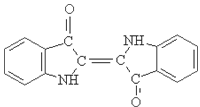Natural Fabric Dye Manufacturer Specializing in Vibrant Blue Plant-Based Solutions for Sustainable Textiles
Exploring Natural Blue Dyes for Fabric Manufacturing
In recent years, there has been a growing emphasis on sustainability in the textile industry. As consumers become increasingly aware of environmental issues, manufacturers are seeking eco-friendly alternatives to synthetic dyes. One of the most captivating developments in this sector is the emergence of natural blue dyes for fabric manufacturing. This article delves into the sources, benefits, and potential applications of natural blue dyes, highlighting their significance in modern textile production.
The Origins of Natural Blue Dyes
Natural blue dyes have been used for centuries, with historical records tracing their origins back to ancient civilizations. One of the most famous sources is indigo, derived from the leaves of the Indigofera plant. This dye has been utilized for millennia to produce rich blue hues on fabrics and has a significant cultural heritage in various regions, particularly in Asia and Africa. Another notable source of natural blue dye is woad, which was historically used in Europe before the introduction of indigo.
More recently, researchers and artisans have turned to lesser-known plants, such as butterfly pea flowers and other indigenous flora, to create vibrant blue dyes. Butterfly pea, for example, not only produces a striking color but also offers additional benefits, including antioxidant properties. This trend toward exploring diverse plant sources reflects a growing understanding of the ecological and health benefits associated with natural dyes.
Benefits of Natural Blue Dyes
One of the primary advantages of natural blue dyes is their environmental impact. Unlike synthetic dyes, which often contain harmful chemicals and heavy metals, natural dyes are typically biodegradable and generated from renewable resources. This transition to natural alternatives can help reduce water pollution and minimize the carbon footprint associated with textile production.
Moreover, natural dyes are generally safer for workers and consumers alike. Fabrics dyed with natural substances tend to be free from harsh chemicals, making them a healthier option for sensitive skin. Additionally, natural blue dyes often provide a unique aesthetic appeal; each dyeing process can yield slight variations in color, allowing for one-of-a-kind textiles that resonate with consumers looking for authenticity and uniqueness.
natural blue dye for fabric manufacturer

Applications in Fashion and Textiles
The resurgence of natural blue dyes has sparked interest across various sectors of the textile industry. Fashion designers are increasingly incorporating these dyes into their collections, seeking to align their brand values with the principles of sustainability and ethical production. High-profile brands have adopted natural dyes as a key part of their eco-conscious initiatives, showcasing collections that not only prioritize aesthetics but also reflect a commitment to environmental stewardship.
In addition to fashion, natural blue dyes are finding applications in home textiles, upholstery, and artisanal crafts. Handcrafted items such as scarves, throws, and garments dyed with natural substances are gaining popularity among consumers looking for sustainable, ethically made products. The storytelling aspect associated with natural dyes appeals to a growing demographic interested in the provenance of their goods and the practices behind them.
Challenges and Future Perspectives
Despite the numerous benefits, the use of natural blue dyes does come with challenges. The dyeing process may require more time and expertise compared to synthetic alternatives, which can hinder scalability. Additionally, consistency in color and lightfastness—how well a dye retains its color when exposed to light—can be more variable with natural dyes. Manufacturers and researchers are working collaboratively to overcome these obstacles by investing in innovations and developing best practices for natural dyeing processes.
Furthermore, as demand for natural dyes continues to rise, there is an urgent need to promote sustainable farming practices to ensure the availability of dyeing plants. This involves fostering relationships with local farmers, supporting agro-biodiversity, and creating awareness about the importance of preserving indigenous plant species.
Conclusion
Natural blue dyes represent an exciting frontier in fabric manufacturing, blending tradition with modern innovation. As the world becomes more conscious of environmental impact and seeks sustainable alternatives, the revival of natural dyes in textiles is not just a trend but a vital shift. By embracing these age-old techniques, the textile industry can pave the way for a cleaner, more sustainable future while celebrating the beauty of nature's palette. As we continue to explore and harness the potential of natural blue dyes, the possibilities for creativity and sustainability are boundless.
-
The Timeless Art of Denim Indigo Dye
NewsJul.01,2025
-
The Rise of Sulfur Dyed Denim
NewsJul.01,2025
-
The Rich Revival of the Best Indigo Dye
NewsJul.01,2025
-
The Enduring Strength of Sulphur Black
NewsJul.01,2025
-
The Ancient Art of Chinese Indigo Dye
NewsJul.01,2025
-
Industry Power of Indigo
NewsJul.01,2025
-
Black Sulfur is Leading the Next Wave
NewsJul.01,2025

Sulphur Black
1.Name: sulphur black; Sulfur Black; Sulphur Black 1;
2.Structure formula:
3.Molecule formula: C6H4N2O5
4.CAS No.: 1326-82-5
5.HS code: 32041911
6.Product specification:Appearance:black phosphorus flakes; black liquid

Bromo Indigo; Vat Bromo-Indigo; C.I.Vat Blue 5
1.Name: Bromo indigo; Vat bromo-indigo; C.I.Vat blue 5;
2.Structure formula:
3.Molecule formula: C16H6Br4N2O2
4.CAS No.: 2475-31-2
5.HS code: 3204151000 6.Major usage and instruction: Be mainly used to dye cotton fabrics.

Indigo Blue Vat Blue
1.Name: indigo blue,vat blue 1,
2.Structure formula:
3.Molecule formula: C16H10N2O2
4.. CAS No.: 482-89-3
5.Molecule weight: 262.62
6.HS code: 3204151000
7.Major usage and instruction: Be mainly used to dye cotton fabrics.

